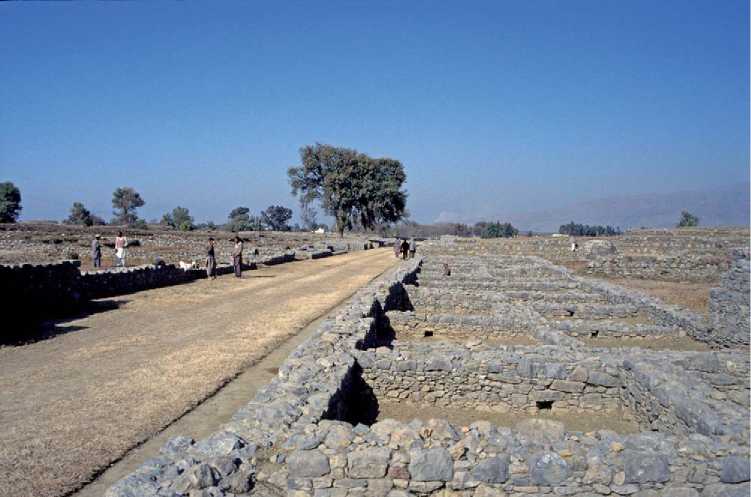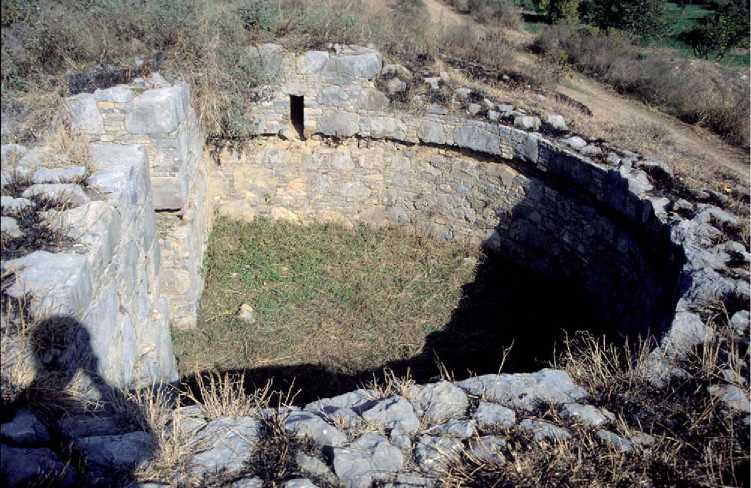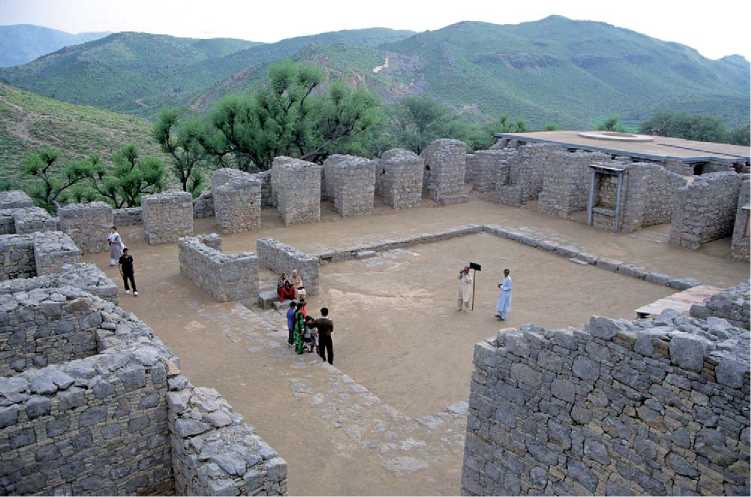This patchwork of city-states and petty dynasties was to be reintegrated by a Central Asian nomadic people known as the Yuezhi or Kushans. Partly responsible for pressuring the Greek communities of Bactria southwards into the Northwest Frontier, they expanded rapidly from this base into Kashmir and by the second century AD had established control from the Oxus to the Ganges - acting as a buffer between the Roman and the Han empires.
Highly dependent on the movement of trade between east and west, they developed a series of major fortified strong points along the trade routes from Mathura on the Jamuna to Sirsukh in the Taxila Valley and on to Begram in Afghanistan and Dalverzin-tepe in Uzbekistan as well as within the Kashmir Valley. While Begram was strengthened by the building of a 12 m wide wall with bastions holding catapults and ballista, Sirkap was abandoned in favor of a site within the valley - Sirsukh. Sirsukh was a massive rectangle measuring 1375 x 1000 m with 5.5 m thick stonewalls strengthened by a rounded berm to prevent undermining. Its walls were regularly punctuated by stirrup bastions with arrow-slits providing a wide range of

Figure 14 The main street of Sirkap, Taxila.
Fire but the absence of occupation deposits suggests that a mobile force occupied the site (Figure 15).
The discovery of ivory objects from the Ganges, Roman glass and metalwork, and Chinese lacquer work in a storeroom at Begram illustrates the success of Kushan trade routes - a success that also facilitated the spread of Buddhism along the Silk route. Although Kushan rulers patronized many religious traditions, there was a dramatic rise in the number of Buddhist monasteries established in the Northwest Frontier and Kashmir. These ranged from the emperor Kanishka’s stupa complex at Shah-ji-ki-dheri in Peshawar to the hundreds of individual religious complexes in the Taxila Valley, such as at Pippala, and within the Vale of Kashmir, such as at Moradhwaj (Figure 16).
Associated with some of the earliest depictions of the Buddha in human form, Kushan rule saw the blending of local and exotic cults, styles, and traditions,

Figure 15 One of the stirrup-bastions at the city of Sirsukh, Taxila.

Figure 16 The Kushan period quadrangular monastery at Morha Moradu in the Valley of Taxila.
Culminating in the emergence of the Mahayana movement. Depictions of the Kushans and the presence of their inscriptions at Chilas and Hunza in the upper Indus Valley and near Leh in Kashmir indicate that their influence was not just urban but was felt high in the mountain passes as well (see Asia, South: Buddhist Archaeology).




 World History
World History









